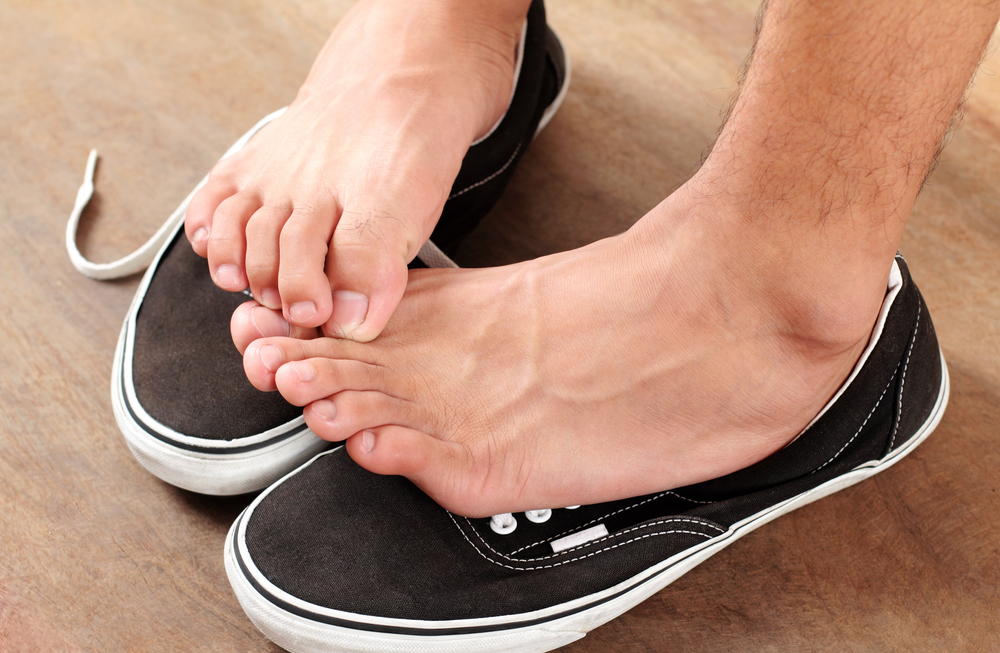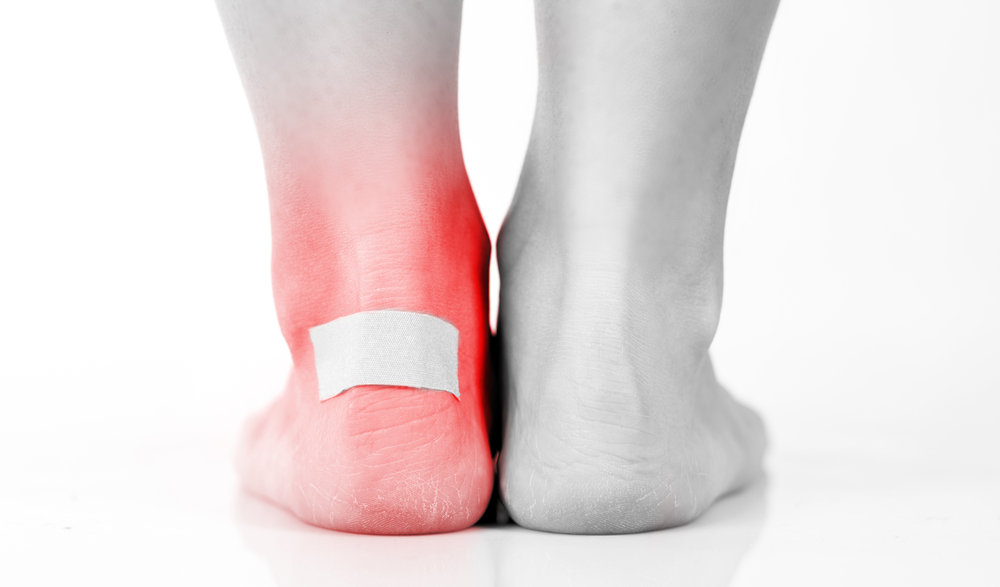Connect With Us
Blog
Items filtered by date: May 2021
How Are Foot Warts Removed?
 Plantar warts are rough, fleshy bumps or lesions that pop up on the soles of the feet due to an infection known as human papillomavirus (HPV). These warts may cause discomfort or pain and since they are contagious, they can spread and multiply. Individuals at home should never try to remove warts by cutting them off. Podiatrists have a variety of methods to choose from when it comes to wart removal. They may remove warts by using chemicals like salicylic acid to kill the wart cells and exfoliate the skin. Cryotherapy involves freezing the wart, also killing the affected cells. Curettage is cutting or scraping the wart away while electrosurgery burns the warts off. Laser treatment should only be considered for warts that do not respond to the previous treatments mentioned. If you have plantar warts, please seek the care of a podiatrist who can help determine the right treatment option for you.
Plantar warts are rough, fleshy bumps or lesions that pop up on the soles of the feet due to an infection known as human papillomavirus (HPV). These warts may cause discomfort or pain and since they are contagious, they can spread and multiply. Individuals at home should never try to remove warts by cutting them off. Podiatrists have a variety of methods to choose from when it comes to wart removal. They may remove warts by using chemicals like salicylic acid to kill the wart cells and exfoliate the skin. Cryotherapy involves freezing the wart, also killing the affected cells. Curettage is cutting or scraping the wart away while electrosurgery burns the warts off. Laser treatment should only be considered for warts that do not respond to the previous treatments mentioned. If you have plantar warts, please seek the care of a podiatrist who can help determine the right treatment option for you.
Plantar warts can be very uncomfortable. If you need your feet checked, contact one of our chiropodists from West Toronto Foot & Ankle Clinic Inc. . Our chiropodist will assist you with all of your foot and ankle needs.
About Plantar Warts
Plantar warts are the result of HPV, or human papillomavirus, getting into open wounds on the feet. They are mostly found on the heels or balls of the feet.
While plantar warts are generally harmless, those experiencing excessive pain or those suffering from diabetes or a compromised immune system require immediate medical care. Plantar warts are easily diagnosed, usually through scraping off a bit of rough skin or by getting a biopsy.
Symptoms
- Lesions on the bottom of your feet, usually rough and grainy
- Hard or thick callused spots
- Wart seeds, which are small clotted blood vessels that look like little black spots
- Pain, discomfort, or tenderness of your feet when walking or standing
Treatment
- Freezing
- Electric tool removal
- Laser Treatment
- Topical Creams (prescription only)
- Over-the-counter medications
To help prevent developing plantar warts, avoid walking barefoot over abrasive surfaces that can cause cuts or wounds for HPV to get into. Avoiding direct contact with other warts, as well as not picking or rubbing existing warts, can help prevent the further spread of plantar warts. However, if you think you have developed plantar warts, speak to your podiatrist. He or she can diagnose the warts on your feet and recommend the appropriate treatment options.
If you have any questions, please feel free to contact our office located in Toronto, ON . We offer the newest diagnostic and treatment technologies for all your foot care needs.
Heel Pain in the Morning?
What Is Athlete's Foot?
 Athlete’s foot is a fungal infection of the skin on the feet. This fungus lives and thrives in warm, moist environments. Walking barefoot in public places such as swimming pools and locker room areas, sharing personal items like shoes and socks, having excessively sweaty or wet feet, or having a minor skin or nail injury on your foot can all make you more susceptible to athlete’s foot. If you have developed athlete’s foot, you may find that the skin on your feet is itchy, dry, cracking, peeling, or raw, especially in between your toes and on the soles of your feet. Potential treatments for athlete’s foot include oral and topical medications. If you are afflicted with athlete’s foot, a chiropodist can help find the right treatment for you.
Athlete’s foot is a fungal infection of the skin on the feet. This fungus lives and thrives in warm, moist environments. Walking barefoot in public places such as swimming pools and locker room areas, sharing personal items like shoes and socks, having excessively sweaty or wet feet, or having a minor skin or nail injury on your foot can all make you more susceptible to athlete’s foot. If you have developed athlete’s foot, you may find that the skin on your feet is itchy, dry, cracking, peeling, or raw, especially in between your toes and on the soles of your feet. Potential treatments for athlete’s foot include oral and topical medications. If you are afflicted with athlete’s foot, a chiropodist can help find the right treatment for you.
Athlete’s foot can be uncomfortable and unsightly. To learn more about preventing and treating this condition, please consult with with Paul A. Scotti, D.Ch of West Toronto Foot & Ankle Clinic Inc. Our chiropodist will assess your condition and provide you with quality foot and ankle treatment.
What Is Athlete’s Foot?
Athlete’s foot refers to an infection of the skin on the feet that is caused by a fungus. This fungus is contagious and thrives in warm and moist environments. It is often spread in common areas such as public pools, locker rooms, and showers. It can also spread when sharing personal items, like shoes or towels, with an infected person.
Symptoms
The symptoms of athlete’s foot may include:
- Itching, stinging, or burning of the skin on the feet
- Cracking or peeling skin, especially between the toes and on the soles of the feet
- Scaly, red rash on the foot
- Blisters
- Foul odor
Treatment
Treatment for athlete’s foot typically involves using over-the-counter topical antifungal medications on the feet. When over-the-counter options are ineffective, you may need to take prescription oral medications or topical antifungal drugs, or a combination of both.
Prevention
Preventing athlete’s foot places an emphasis on good foot hygiene practices.
You can prevent athlete’s foot by:
- Washing and drying your feet thoroughly every day
- Wearing shoes when walking in public areas
- Not sharing personal items, like shoes or socks, with others
- Wearing shoes and socks made out of breathable materials
If you have any questions, please feel free to contact our office located in Toronto, ON. We offer the newest diagnostic and treatment technologies for all your foot care needs.
What Should I Do if I Have a Foot Blister?
 Blisters are small, fluid-filled bumps that typically develop on the feet due to friction. They typically heal on their own given time. It is best not to pop a blister, as the fluid inside protects the raw skin underneath the blister from the environment. If you find yourself with a foot blister that is likely to burst on its own, it is recommended that you cover it with a bandage or soft dressing to protect it. If your blister has burst, wash your hands before touching the area and allow the blister to fully drain before covering it with a bandage. If you have a foot blister that is showing signs of infection, such as redness, warmth, pain, swelling, or the appearance of pus, it is strongly suggested that you seek treatment from a chiropodist.
Blisters are small, fluid-filled bumps that typically develop on the feet due to friction. They typically heal on their own given time. It is best not to pop a blister, as the fluid inside protects the raw skin underneath the blister from the environment. If you find yourself with a foot blister that is likely to burst on its own, it is recommended that you cover it with a bandage or soft dressing to protect it. If your blister has burst, wash your hands before touching the area and allow the blister to fully drain before covering it with a bandage. If you have a foot blister that is showing signs of infection, such as redness, warmth, pain, swelling, or the appearance of pus, it is strongly suggested that you seek treatment from a chiropodist.
Blisters can usually be treated at home, however, if you have recurring blisters or experience significant discomfort or pain, please consult with Paul A. Scotti, D.Ch of West Toronto Foot & Ankle Clinic Inc. Our chiropodist will assess your condition and provide you with quality foot and ankle treatment.
What Is a Blister?
A blister is a small pocket of fluid in the upper skin layers and is one of the body’s natural responses to injury or pressure. Blisters can also result from burns, fungal or viral skin infections, and the feet are particularly prone due to ill-fitting footwear and friction. Friction on the skin causes the upper layer of skin to separate from the lower layers. The space that this separation creates then becomes filled with a liquid called serum, which protects the lower layers of skin.
Treatment
If you notice a blister on your foot, you can cover it with a soft bandage or dressing to protect it. Popping the blister is discouraged. Doing so exposes the raw skin underneath it to bacteria and also raises the risk of infection. If a blister pops naturally, let it drain before covering it with a bandage. Usually blisters heal on their own or with home treatment, however, if your blister is recurring, very painful, or appears infected, it is recommended that you see a chiropodist for treatment.
Prevention
You can help to prevent blisters by wearing comfortable, well-fitted shoes. Keep your feet dry by wearing moisture-wicking socks and dust your feet with talcum powder if they tend to get sweaty. If you have areas on your feet that are more susceptible to blisters, you might be able to prevent the blister from forming by covering it with a pad.
If you have any questions, please feel free to contact our office located in Toronto, ON. We offer the newest diagnostic and treatment technologies for all your foot care needs.
Blog Archives
- November 2025
- October 2025
- September 2025
- August 2025
- July 2025
- June 2025
- May 2025
- April 2025
- March 2025
- February 2025
- January 2025
- December 2024
- November 2024
- October 2024
- September 2024
- August 2024
- July 2024
- June 2024
- May 2024
- April 2024
- March 2024
- February 2024
- January 2024
- December 2023
- November 2023
- October 2023
- September 2023
- August 2023
- July 2023
- June 2023
- May 2023
- April 2023
- March 2023
- February 2023
- January 2023
- December 2022
- November 2022
- October 2022
- September 2022
- August 2022
- July 2022
- June 2022
- May 2022
- April 2022
- March 2022
- February 2022
- January 2022
- December 2021
- November 2021
- October 2021
- September 2021
- August 2021
- July 2021
- June 2021
- May 2021
- April 2021
- February 2021
- January 2021

